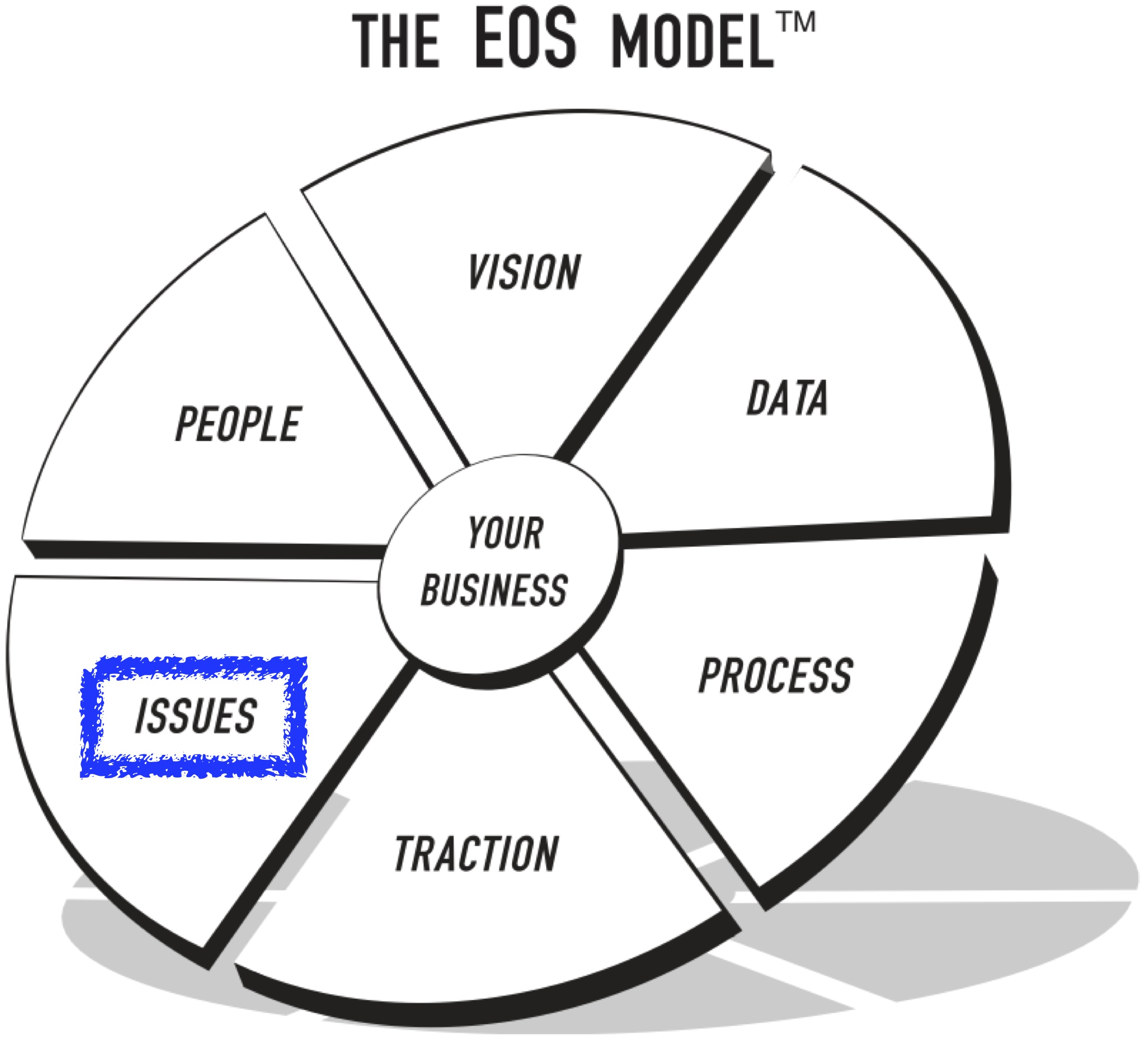Issues + EOS
10 Feb 2022
From The Issues Component chapter of the book Traction:
Problems are like mushrooms. When it’s dark and rainy, they multiply. Under bright light, they diminish. In an organization where there is nowhere to hide, the problems are easily illuminated. EOS will create that strong light.
Time to shine the light, find the issues, and solve them.
The Issues Component
This article is part of a series on Traction and the Entrepreneurial Operating System (EOS). EOS is a set of tools that enables a business leader to grow a company while maintaining sanity. Today’s EOS component: Issues.
Issues are not a sign of weakness. Every organization has issues. Strong organizations have a framework for resolving issues. The Issues chapter of Traction presents such a framework.
People in the organization must feel comfortable calling out anything that stands in the way of the company’s vision. Leadership must create an environment of honest and respectful communication. If a leader kills the messenger, then small problems will be allowed to fester and grow until they become truly threatening.
The Issues Solving Track
The EOS framework for solving issues consists of three key steps:
- Identify
- Discuss
- Solve
Identify
When we attempt to identify an issue, we rarely get it right on the first try. The true issue is typically a few layers down. During the Identify step, members of the team gather together to explore the issue. Explorations like this can get uncomfortable, and the participants can only power through the pain if they trust each other.
Discuss
It is tempting to blend the Identify and Discuss steps because humans enjoy talking about things. But the IDS methodology encourages us to discipline ourselves against this. Why? So that we can avoid tangents. Meetings can go on forever when tangents remain unchecked.
Instead of “Discuss”, a better name for this step might be “Discuss the Solution”, thereby drawing a clear line between the first two steps.
According to the methodology, the Discussion step is everyone’s opportunity to share everything they know about the issue identified above. Everything goes out on the table, and nothing is sacred.
Solve
This step becomes an action item for someone to do. And someone must be responsible for the outcome. If everybody is responsible, then nobody is responsible.
IDS Between Organizations
In one example from the book, two companies that do business together were having problems. Both companies happened to be users of EOS. So they got together in a conference room and processed their differences using IDS as described above. The methodology works between separate organizations.
EOS Recap
If you are considering EOS for your business, you might enjoy the other articles in the series:




